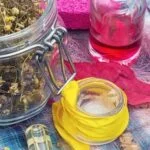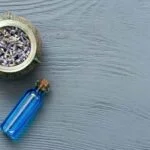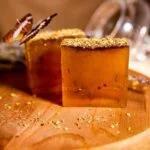Aromatherapy body massage is a therapeutic practice that combines the benefits of massage therapy with the use of essential oils derived from plants. This holistic approach not only aims to relax and heal the body, but also stimulates the senses and promotes overall well-being. In this article, we will explore the world of aromatherapy body massage, its history, techniques, and the numerous benefits it offers.
Aromatherapy has been practiced for centuries and can be traced back to ancient civilizations such as Egypt and China. It uses the aromatic properties of plant extracts to enhance physical and emotional health. Aromatherapy body massage takes this concept further by incorporating the gentle manipulation of muscles and tissues along with the inhalation or topical application of essential oils.
The combination of touch therapy and aromatics results in a deeply relaxing experience that can help reduce stress, relieve muscle tension, improve circulation, and promote better sleep. The powerful scents released during the massage also have a direct impact on our emotions, triggering feelings of calmness, happiness, or invigoration depending on the specific essential oils used.
Whether you are seeking a way to unwind after a long day or aiming to address specific health concerns such as anxiety or migraines, aromatherapy body massage may hold the key to finding balance in your life.
In the next sections, we will delve into its history, basic principles, techniques used, potential benefits, popular essential oils employed in this practice, finding reputable spa or therapists for treatment sessions, safety precautions involved when using essential oils for self-care at home as well as DIY techniques everyone can try.
So come along on this journey as we embrace the blissful world of aromatherapy body massage.
The History of Aromatherapy
Aromatherapy has a rich and fascinating history that dates back thousands of years. The use of aromatic plants for healing and relaxation purposes can be traced back to ancient civilizations such as Egypt, Greece, and China. These cultures recognized the power of scent and its ability to influence emotions, enhance well-being, and promote overall health.
In ancient Egypt, essential oils were highly prized and used for their therapeutic properties as well as for cosmetic and spiritual purposes. The Egyptians were known to have developed advanced techniques for extracting essential oils from plants through methods such as distillation. They used these oils in baths, massage oils, perfumes, and in religious ceremonies.
Similarly, in ancient Greece, the practice of aromatherapy was prevalent. Renowned Greek physicians such as Hippocrates believed in the healing properties of aromatic plants and used them to treat various ailments. They also recognized the importance of balancing the mind and body to achieve optimal health.
In China, aromatherapy was an integral part of traditional medicine practices such as Traditional Chinese Medicine (TCM). Aromatic herbs were used in combination with acupuncture and massage therapy to restore energy balance within the body.
Throughout history, aromatherapy has been passed down through generations and adapted by different cultures around the world. It wasn’t until the 20th century that it gained significant recognition in Western society. In 1937, French chemist René-Maurice Gattefossé coined the term “aromatherapie” after he accidentally discovered the healing benefits of lavender oil when treating his burn injury.
Today, aromatherapy continues to grow in popularity as more people seek alternative approaches to wellness. It is not only considered a luxurious spa treatment but also a holistic practice that promotes physical relaxation, emotional well-being, stress relief, and overall harmony between mind and body.
Some popular methods of using essential oils include diffusing them into the air, adding them to baths, and using them in therapeutic massages. The history of aromatherapy serves as a testament to the enduring power and effectiveness of these natural plant extracts in improving our health and enhancing our lives.
The Basics of Aromatherapy
Aromatherapy is a holistic healing practice that involves the use of essential oils to promote physical and emotional well-being. It has been used for centuries across various cultures and is now widely recognized as a complementary therapy for relaxation and stress relief. In this section, we will explore the basics of aromatherapy, including its fundamental principles and the use of essential oils in body massage.
The Fundamental Principles of Aromatherapy
Aromatherapy is based on the principle that inhaling or applying essential oils can have therapeutic effects on the body, mind, and spirit. Essential oils are highly concentrated plant extracts that capture the aromatic essence and healing properties of plants. They are extracted from flowers, leaves, stems, bark, roots, or seeds using various methods such as steam distillation or cold-press extraction.
When inhaled or absorbed through the skin during a body massage, these potent essential oils interact with the body’s chemistry to stimulate natural healing mechanisms. Each oil carries unique therapeutic properties that can influence mood, reduce inflammation, boost immunity, relieve pain, and promote relaxation.
Using Essential Oils in Aromatherapy Body Massage
In aromatherapy body massage, essential oils are used in combination with carrier oils to dilute their concentration before application. Carrier oils such as almond oil or jojoba oil provide lubrication for smooth application and help prevent skin irritation from direct contact with undiluted essential oils.
During a body massage session, the therapist will typically apply a blend of carrier oil infused with a few drops of selected essential oils onto the client’s skin. The therapist then uses various massage techniques to distribute the oil over the body while focusing on specific areas that may require extra attention.
The absorption of these aromatic essential oils through the skin primes them to enter into circulation throughout the bloodstream. As they travel through the body via circulation systems including cardiac compression (massaging pressure by the heart), they can reach target organs and systems, exerting their therapeutic effects.
How Aromatherapy Body Massage Works
Aromatherapy body massage works by combining the therapeutic benefits of massage with the healing properties of essential oils. During an aromatherapy body massage, the massage therapist will use gentle and soothing strokes to apply the essential oils onto the client’s skin. These oils are carefully chosen based on their specific properties and the desired outcome of the massage.
The process of aromatherapy body massage begins with a consultation, where the client discusses their needs and preferences with the therapist. The therapist then selects an appropriate blend of essential oils that will address those needs. The essential oils are diluted in a carrier oil before being applied to the skin to ensure safety and effectiveness.
Once applied, the essential oils penetrate the skin and enter the bloodstream, where they can have a direct effect on various physiological systems in the body. The aroma of these oils also plays a significant role in stimulating the olfactory senses, which can have a powerful impact on mood and emotions.
The techniques used during an aromatherapy body massage may vary depending on the client’s needs and preferences. The therapist may use long, sweeping strokes for relaxation or deep pressure for muscle tension release. The combination of these techniques with the inhalation of aromatic scents creates a deeply relaxing and therapeutic experience for both mind and body.
In addition to its physical benefits, aromatherapy body massage also works on an emotional level. The scents released during the massage can help promote relaxation, reduce anxiety, and uplift one’s mood. This holistic approach addresses not only physical ailments but also emotional well-being, making it an ideal treatment for individuals seeking overall rejuvenation and relaxation.
Benefits of Aromatherapy Body Massage
Aromatherapy body massage offers numerous benefits for both the body and mind. This section will highlight some of the key advantages of incorporating aromatherapy into your massage routine.
One of the primary benefits of aromatherapy body massage is stress relief. The combination of soothing massage techniques and the inhalation of aromatic essential oils can help promote deep relaxation and reduce anxiety. Essential oils such as lavender, chamomile, and ylang-ylang are known for their calming properties and can aid in relieving stress-related symptoms like tension headaches, insomnia, and muscle aches.
In addition to stress reduction, aromatherapy body massage also has a positive impact on one’s overall well-being. The essential oils used in these massages have various therapeutic properties that can enhance physical and mental health. For example, eucalyptus oil is often used to alleviate respiratory issues and boost immunity, while peppermint oil can help improve digestion and increase energy levels.
Furthermore, aromatherapy body massage can be beneficial for individuals dealing with specific health conditions or concerns. Essential oils like tea tree oil are known for their anti-inflammatory and antimicrobial properties, making them useful for treating skin conditions such as acne or eczema. Other essential oils such as ginger or rosemary can help relieve pain and inflammation caused by arthritis or muscle soreness.
Overall, incorporating aromatherapy into a body massage can provide a range of benefits for both physical and emotional well-being. Whether you’re seeking relaxation, pain relief, or an immune system boost, aromatherapy body massage offers a holistic approach to healing and rejuvenation.
| Benefits | Examples of Essential Oils |
|---|---|
| Stress Relief | Lavender, Chamomile, Ylang-Ylang |
| Physical Well-being | Eucalyptus, Peppermint |
| Specific Health Concerns | Tea Tree, Ginger, Rosemary |
Popular Essential Oils Used in Aromatherapy Body Massage
Aromatherapy body massage involves the use of essential oils, which are highly concentrated plant extracts, to enhance the therapeutic benefits of a traditional massage. These essential oils are derived from various parts of plants, such as leaves, flowers, stems, and even roots. Each essential oil possesses unique properties and benefits that can contribute to the overall well-being of individuals during a body massage.
Here are some popular essential oils commonly used in aromatherapy body massage:
- Lavender: Known for its calming and soothing properties, lavender essential oil is often used to promote relaxation and improve sleep quality. It may also help alleviate anxiety and reduce muscle tension.
- Peppermint: With its refreshing and invigorating scent, peppermint essential oil is often used to boost energy and mental alertness. It may also help relieve headaches and ease muscle pain.
- Eucalyptus: Recognized for its cooling effect, eucalyptus essential oil is commonly used in massages for respiratory issues like congestion and sinus pain. It can also help soothe sore muscles.
- Rosemary: Rosemary essential oil has an uplifting aroma that can stimulate the senses and improve focus. It may also help relieve fatigue and muscle soreness.
- Chamomile: Known for its calming properties, chamomile essential oil is often used to promote relaxation and improve sleep quality. It may also help soothe skin irritations.
- Lemon: Lemon essential oil has a refreshing citrus scent that can uplift mood and increase mental clarity. It may also have cleansing properties for the skin when applied topically.
It’s important to note that these are just a few examples of popular essential oils used in aromatherapy body massage. There are many other options available, each with their own unique benefits and uses. When seeking an aromatherapy body massage, it is essential to communicate with your massage therapist about your preferences and any potential allergies or sensitivities you may have.
Finding the Right Spa or Massage Therapist
When seeking an aromatherapy body massage, it is essential to find the right spa or massage therapist that will provide a safe and effective experience. With numerous options available, it can be overwhelming to choose the best one. However, by considering certain factors, individuals can make an informed decision and ensure that they have a positive and relaxing experience.
Certifications and Qualifications
One of the first things to consider when looking for a spa or massage therapist for an aromatherapy body massage is their certifications and qualifications. It is important to choose a professional who is trained in aromatherapy techniques and familiar with the proper use of essential oils. Look for therapists who have credentials from reputable organizations such as the National Association for Holistic Aromatherapy (NAHA) or the International Federation of Professional Aromatherapists (IFPA).
Reviews and Recommendations
Another helpful factor in selecting the right spa or therapist is reading reviews and seeking recommendations from others. Check online platforms such as Yelp or Google reviews to get an idea of other people’s experiences at different spas or with specific therapists. If possible, ask friends, family members, or colleagues for recommendations based on their own positive experiences.
Personal Preferences
Understanding personal preferences is also crucial when choosing a spa or therapist for an aromatherapy body massage. Consider factors such as location, ambiance, pricing, and types of treatments offered. Some individuals may prefer a more serene and tranquil environment while others may enjoy a lively atmosphere. It is also important to inquire about any additional services offered at the spa to ensure it aligns with your preferences.
Overall, finding the right spa or massage therapist for an aromatherapy body massage requires careful consideration of certifications and qualifications, reviews and recommendations, as well as personal preferences. Taking these factors into account will help ensure a relaxing and rejuvenating experience that meets individual needs and preferences.
Safety Precautions When Using Essential Oils
When it comes to enjoying the benefits of aromatherapy body massage, safety should always be a top priority. While essential oils can provide numerous therapeutic effects, they are potent substances that should be used with caution. Here are some important safety precautions to keep in mind when using essential oils during an aromatherapy body massage.
First and foremost, it is crucial to properly dilute essential oils before applying them to the skin. Most essential oils are highly concentrated and can cause skin irritation or allergic reactions if used undiluted.
To ensure safe use, mix a few drops of the chosen essential oil with a carrier oil such as jojoba or almond oil. A general guideline is to use about 10-15 drops of essential oil per ounce of carrier oil, but this can vary depending on the specific oil and individual preferences.
Before incorporating any new essential oil into your aromatherapy body massage routine, it is recommended to perform a patch test on a small area of the skin. Apply a diluted mixture of the essential oil and carrier oil onto the inner forearm or behind the ear and wait for at least 24 hours. If no adverse reactions occur, such as redness, swelling, or itching, it should generally be safe to proceed with using that particular essential oil.
It is also important to consider any potential contraindications or sensitivities when choosing essential oils for an aromatherapy body massage. Certain oils may not be suitable for individuals with certain medical conditions such as asthma, epilepsy, or pregnancy. Additionally, some oils may interact with medications or trigger allergies in sensitive individuals. It is advisable to consult with a qualified healthcare professional or certified aromatherapist for personalized advice if you have any concerns or specific health conditions.
By following these safety precautions when using essential oils during an aromatherapy body massage, you can ensure a pleasant and risk-free experience. Remember that everyone’s sensitivity and reaction to essential oils may vary, so it is essential to listen to your body and discontinue use if any adverse effects occur. With proper precautions, you can enjoy the therapeutic benefits of aromatherapy while ensuring your well-being and safety.
DIY Aromatherapy Body Massage Techniques
Aromatherapy body massage is a popular form of alternative therapy that combines the benefits of massage with the use of essential oils. While visiting a professional spa or massage therapist for an aromatherapy body massage is ideal, there are also techniques that you can try at home to enjoy the benefits of this practice.
To perform a DIY aromatherapy body massage, you will need a few essential tools and ingredients. First, choose an essential oil or blend that suits your needs. Lavender, chamomile, and eucalyptus are great options for relaxation and stress relief, while rosemary and peppermint can invigorate the senses. It’s important to note that some essential oils may cause skin irritation or allergic reactions, so it’s crucial to do a patch test before use.
Next, dilute the essential oil in a carrier oil such as sweet almond oil or jojoba oil. The ratio typically recommended is about 2-3 drops of essential oil per tablespoon of carrier oil. This ensures that the essential oils are properly diluted and safe for use on the skin.
Now it’s time to start the massage. Begin by finding a quiet and comfortable space where you can relax. Apply a small amount of the diluted essential oil mixture onto your hands and rub them together to warm up the oil. Start by massaging your neck and shoulders using gentle circular motions and gradually work your way down to your back, arms, legs, and feet.
When performing the massage, it’s important to listen to your body and adjust pressure accordingly. If you feel any pain or discomfort, lighten up on the pressure or stop altogether. Remember that this is meant to be a relaxing experience.
By practicing these DIY aromatherapy body massage techniques at home, you can reap many of the benefits without having to leave your house. Make sure to create a peaceful environment free from distractions and give yourself the time and space to fully relax. Whether as a self-care practice or a way to bond with a loved one, DIY aromatherapy body massage can provide you with a tranquil escape from the stresses of everyday life.
Conclusion
In conclusion, aromatherapy body massage offers a range of benefits for both the body and mind. Throughout this article, we have explored the history, basics, techniques, and benefits of aromatherapy body massage. The use of essential oils in this practice has been shown to promote relaxation, relieve stress, and improve overall well-being.
Aromatherapy is not a new concept; it has been used for centuries for healing and relaxation purposes. The therapeutic properties of essential oils have been harnessed by various cultures throughout history. Today, aromatherapy body massage continues to be popular as people seek natural alternatives for self-care and rejuvenation.
When receiving an aromatherapy body massage, it is important to find a reputable spa or massage therapist who specializes in this practice. Certification, reviews, and personal preferences should be considered when making a choice. Additionally, safety precautions must be taken when using essential oils during an aromatherapy body massage. Dilution techniques, patch testing, and contraindications should all be understood before embarking on this journey of self-care.
For those who prefer a DIY approach or cannot access professional services easily, performing your own aromatherapy body massage at home is possible. With proper guidance and instructions, you can create a relaxing environment and safely apply essential oils to your own skin.
Frequently Asked Questions
What does a full body aromatherapy massage include?
A full body aromatherapy massage is a therapeutic treatment that involves the use of essential oils, combined with traditional massage techniques. During this type of massage, the therapist will apply various essential oils to the skin and incorporate them into the massage lotion or oil used during the treatment.
The essential oils used are carefully selected based on their specific properties and therapeutic benefits. As a result, a full body aromatherapy massage provides not only physical relaxation but also aims to address emotional and mental well-being.
What is the difference between massage and aromatherapy massage?
The main difference between a regular massage and an aromatherapy massage lies in the addition of essential oils. While both types of massages involve manipulating soft tissues to relieve tension and promote relaxation, aromatherapy massages go a step further by incorporating the use of specific essential oils tailored to the individual’s needs.
These aromatic oils enhance the overall experience by stimulating the sense of smell, which can have additional therapeutic effects on emotions and mood.
Are aromatherapy massages worth it?
Whether or not aromatherapy massages are worth it is subjective and depends on personal preferences and needs. For individuals seeking holistic healing experiences that target both physical and emotional well-being, aromatherapy massages can be highly beneficial. The combination of skilled massage techniques with carefully chosen essential oils creates a deeply relaxing experience that can help reduce stress, anxiety, muscle tension, and improve overall mood.
However, it’s important to note that individual reactions may vary, and some people may not respond as strongly to aromatherapy as others. Additionally, it’s crucial to choose a qualified therapist who understands proper application of essential oils to ensure safety and effectiveness during the treatment.

Are you looking for a natural way to improve your health and wellbeing?
If so, aromatherapy may be the answer for you.





